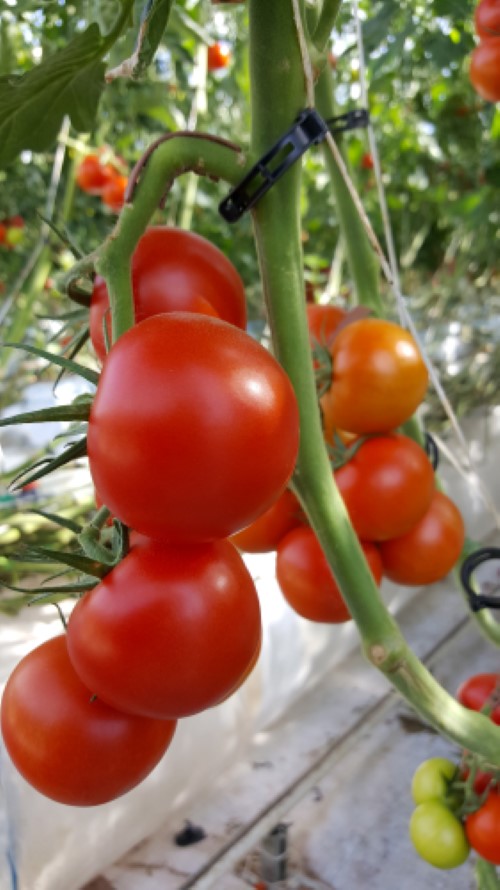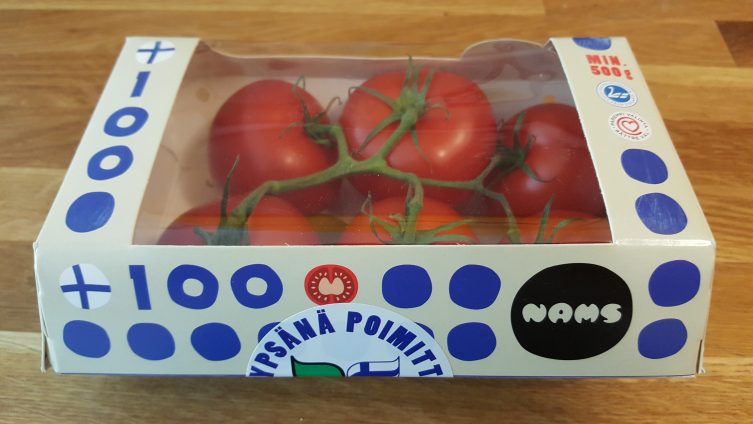A total of 66,000 tomato plant tops rise high up to the ceiling of the greenhouse, branches heavy with tomatoes that are not picked until they are ripe. The tomatoes carrying the brand name Nams, the word for yummy in Finnish, compete with quality that is created as the tomatoes stay attached to the plant until fully ripe, absorbing nutrients and sugars.
At the moment the enterprise is carbon neutral, and the aim is to turn it into a carbon sink. The district heat used in the greenhouse is generated from wood chips and peat in the Aittaluoto Combined Heat and Power Plant of Pori Energia. For the Dutch greenhouse technology manufacturer KUBO the site was the first one within a district heating network, as greenhouses are usually located quite far away from urban areas.
The design of the greenhouse for sustainable tomatoes follows the principles of a circular economy. Rainwater is collected, disinfected and then used for irrigation. Making use of rainwater in greenhouses is only getting started in Finland, but in some countries such as the Netherlands this is already quite common. The water-fertiliser liquid is conducted via a hose into a plant grow bag made of recycled plastic. Surplus irrigation water is collected and reused after the fertilisation has been optimised.
Enough light is produced by 5,100 bulbs with a total power of 5.1 million watts. The extra heat produced by the bulbs close to the ceiling is circulated downwards for use by the plants.
In the growing media natural materials are used: peat, moss and coco coir. Biological prevention is used for plant protection.
 All the surplus water from irrigation and fertilisers are collected and reused.
All the surplus water from irrigation and fertilisers are collected and reused.
What still needs to be improved, according to Sebastian Anttila, is the hooks use to support the tomato trusses. So far nobody is manufacturing biodegradable hooks. The small plastic hooks restrict the ways how the 300 tonnes of plant biomass left after harvesting can be used. But, he is confident that a solution will be found within the next few years. A goal for the future is also to have a biogas plant on the premises.
 Hopefully, the small hooks used to support the tomato trusses
Hopefully, the small hooks used to support the tomato trusses
will soon be made from biomaterials.
Agrifutura’s investment is more than EUR 6 million. At the moment it has a staff of 30, and the plan is to expand both the greenhouse area and number of employees. From the European Agricultural Fund for Rural Development (EAFRD) EUR 1.5 million was granted to support the investment.
The box used to sell the tomatoes (in the main picture) including the transparent film can be recycled as cardboard. “I sleep better because it is not PET plastic”, Sebastian Anttila says with a laugh.


